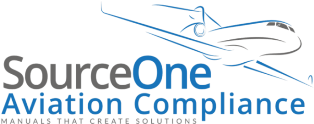Enhanced Flight Vision Systems Operations Manual / Module
EFVS:
FAA LOA/OpSpec C048 Applications include the following:
Operations Manual with Operational Procedures and Policy
- FAA LOA/OpSpec C048 Application for EFVS
- Supporting Aircraft & Flight Crew Documents
- Description of Enhanced Flight Vision System
- Support during FAA approval process.
EFVS Operations Manual / Module is over 75 pages and includes the following:
- Ultra high quality in color
- Table of Contents/Control Page
- Operator Information
- Highlights of Change
- Revision Page
- Introduction
- Abbreviations and Acronyms
- References
- Overview of EFVS Operations
- Flight Crew Procedures
- Flight Crew Call Outs using EFVS
- CFRs
- Temporary Revisions are included at no addition charge as necessary
- Digital PDC Copy for PC, EFB, Tablet, or IPAD with a 1-time setup fee per Client for electronic document Access on Cloud Server for Storage 24/7/365
- Company Logo Option added to Manual Cover (Client provided)
- A paper copy may be purchased in black & white for $275.00 or color for $450.00 with our commercial printer by additional request.
Total Cost is $CALL
Terms
Enhanced Flight Vision System
EFVS is a technology which incorporates information from aircraft based sensors (e.g., near-infrared cameras, millimeter wave radar) to provide vision in limited visibility environments.
Night vision systems have been available to pilots of military aircraft for many years. More recently business jets have added similar capabilities to aircraft to enhance pilot situational awareness in poor visibility due to weather or haze, and at night. The first civil certification of an Enhanced Vision System (EVS) on an aircraft was pioneered by Gulfstream Aerospace using a Kollsman IR camera. Originally offered as a option on the Gulfstream V aircraft, it was made standard equipment in 2003 when the Gulfstream G550 was introduced and followed on the Gulfstream G450 and Gulfstream G650. As of 2009, Gulfstream has delivered over 500 aircraft with a certified EVS installed. Other aircraft Original Equipment Manufacturers (OEMs) followed, with EVS now available on some Bombardier and Dassault business jet products. Boeing has begun offering EVS on its line of Boeing Business Jets and it is also an option on the B787.
The Gulfstream EFVS and later EFVS II systems use an IR (infrared) camera mounted in the aircraft’s nose to project a raster image on the Heads-Up Display (HUD). The IR image on the HUD is conformal to the outside scene, meaning that objects detected by the IR camera are the same size and aligned with objects outside the aircraft. Thus in poor visibility the pilot is able to view the IR camera image and is able to seamlessly and easily transition to the outside world as the aircraft gets closer to the runway.
The advantage of EFVS is that safety in nearly all phases of flight is enhanced, especially during approach and landing in limited visibility. A pilot on a stabilized approach is able to recognize the runway environment (lights, runway markings, etc.) earlier in preparation for touchdown. Obstacles such as terrain, structures, and vehicles or other aircraft on the runway, that might not otherwise be seen, are clearly visible on the IR image.
Infrared Technology Innovation
EFVS incorporates a specialized advance infrared imaging technology. The new generation IR cameras operate in the shortwave infrared (SWIR) spectrum. This SWIR sensor is specially tuned to the frequency of runway lights, and is sensitive to the light inherent in the surrounding environment. The nose radome-mounted camera sends a picture to the HUD combiner, giving the pilot an accurate look in low visibility conditions. Even at night, EFVS renders visible runway markings, taxiways, adjacent highways, and the surrounding landscape, drastically improving the margin for error and for Controlled Flight Into Terrain (CFIT).
EFVS II
EFVS II is the next generation Enhanced Vision System (EVS) allowing for increased pilot visibility and flight safety during flight operations in darkness, smoke, haze, rain, fog, and other low visibility conditions.
The EFVS II, enhances a pilot’s ability to safely fly an aircraft by providing increased flight visibility for improved situation awareness. EVS II allows a pilot to identify runway lights and ground features at night and under low visibility conditions by adjusting to current conditions in real time to maintain optimal detection capability. The enhanced flight visibility is provided in accordance with Federal Aviation Authority (FAA) and European Aviation Safety Agency (EASA) Enhanced Flight Vision Systems (EFVS) regulations. EFVS II operation is based on advanced infrared (IR) sensor functionality, and works in conjunction with the aircraft Head Up Display (HUD) and head-down display. EFVS II is installable in both fixed wing and rotary wing aircraft.
